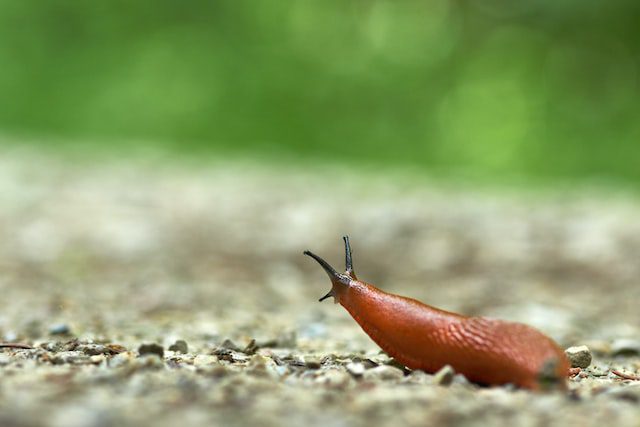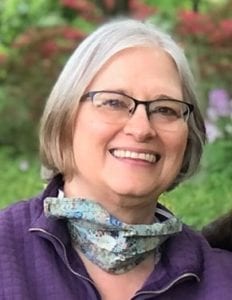It all started with a slug. (It wasn’t as cute as the one in the photo above.)
I was minding my own business, enjoying the cool air of morning, happily snipping arugula in my garden, when I came across a SLUG. EWWW!
Without conscious thought, my arm jerked and flung the leaf with the slug on it away, and then I averted my eyes (and as best I could, my thoughts) as I continued harvesting the greens.
As luck (or providence) would have it, I had just returned from a walk where I had been invited to notice and take pictures of things that made me uncomfortable, uneasy or anxious. So I thought about talking a photo of the slug. But I didn’t want to look at it, much less have a photo of it to stumble across at a later time!
I took the greens inside and started moving them into a storage container.
Another slug! EWWWW!
I tossed it into the compost basin and once again kept my eyes focused in another direction.
But I couldn’t escape the slug. Long after I had put the arugula away, the emotion connected to the slug stuck with me. I decided I needed to contemplate that, difficult as it was. (Every time I thought of it, my face moved into a grimace of disgust.)
Part of me realized I was over-reacting to a simple garden pest – but something about its gooeyness just turned my stomach. I think we all have reactions like that, reactions that we know are not entirely rational but come upon us anyway.
Returning to the contemplative photography exercise, with the image of the slug firmly in my mind, if not in a photo, I was encouraged to stay with any feelings of discomfort, and to journal with the “I am” exercise, speaking from the perspective of the image.
In addition to some of the above, I wrote the following in my journal:
I am a slug. I am despised by many, some because I eat things they claim as “theirs,” others because of my unusual appearance. I hide in the shadows and under leaves. I am completely vulnerable with no shell to protect me. Yet despite my vulnerability (or maybe because of it), some people find me “disgusting,” “revolting,” “ugly,” “unclothed,” “naked.”
Sitting with that writing, I felt a wake up call: to pay more attention to my aversions, big and small. To notice when my body is contracting in some way, when I feel anxiety, or disgust, or boredom, or anger, or any sort of discomfort, even in very subtle ways. I don’t have to DO anything about those things – though I may. Just noticing them is enough to remind me to take a breath and let go, or if it is a stronger sensation, to make space and invoke curiosity.
I thought about how I judge some things as “ugly” and others as “beautiful.” I thought about how I call some things “weeds,” just because they are not where I would prefer them to be. I thought about how I call some things “mine.” I thought about how I often avert my eyes or attention from certain people. I thought about the discomfort I sometimes feel in unfamiliar neighborhoods. And I sensed an invitation to keep noticing those things, allowing my reaction and making space around it to notice more. To notice God.
I don’t have any “answers,” only an invitation to keep noticing and keep engaging.
Invitation to Action:
Try the exercise above: center yourself, ask for support from All-That-Is, and take a walk – it could even be inside your home. As you walk, try to keep an open awareness, not trying to make anything happen, just noticing what captures your attention, and noticing your reaction to those things. What does that reaction feel like in your body? What do you notice as you allow yourself to feel that reaction?
Pay particular attention to anything that unsettles, repels, or disgusts you in any way. Take a photo, or just make a mental note. After your walk (it might be as short as 5-10 minutes), sit with your photos. See if one or two “shimmer” to be engaged with, and write about them, using the “I am” prompt. Then read what you have written and see if there is any metaphor or deeper meaning for you there today. Express gratitude for anything you receive, and continue to have an open curiosity about anything that remains unsettling. Perhaps more will come at a later time.
———————————————————-
This contemplative photography exercise came from the book The Soul’s Slow Ripening: 12 Celtic Practices for Seeking the Sacred, by Christine Valters Paintner, which I am reading with the summer book groups at The Sophia Center for Spirituality. Each chapter includes a different contemplative photography practice. If contemplative photography and/or Celtic practices “shimmer” for you, I invite you to engage with this book. I recommend that you read it and discuss it with at least one other person to truly appreciate its depths.
What I have found particularly helpful in this season of my life are the varied photography explorations. Not as creative expression – most of my photographs are not “art” in any sense of the word. But the practice of taking them is a way of paying attention to what captures my attention. Christine Valters Paintner calls this noticing what “shimmers.” In some exercises, she invites us to pay attention to shadow, or things surrounding the “shimmering’ object.
I invite you to try contemplative photography as a spiritual practice – you will likely be surprised at what emerges from a walk around your yard or neighborhood. You can also do these exercises without walking far at all, just noticing what shimmers in your immediate environs when you pay attention in a particular way.
Let me know how it goes.



 by Heart Light Digital
by Heart Light Digital